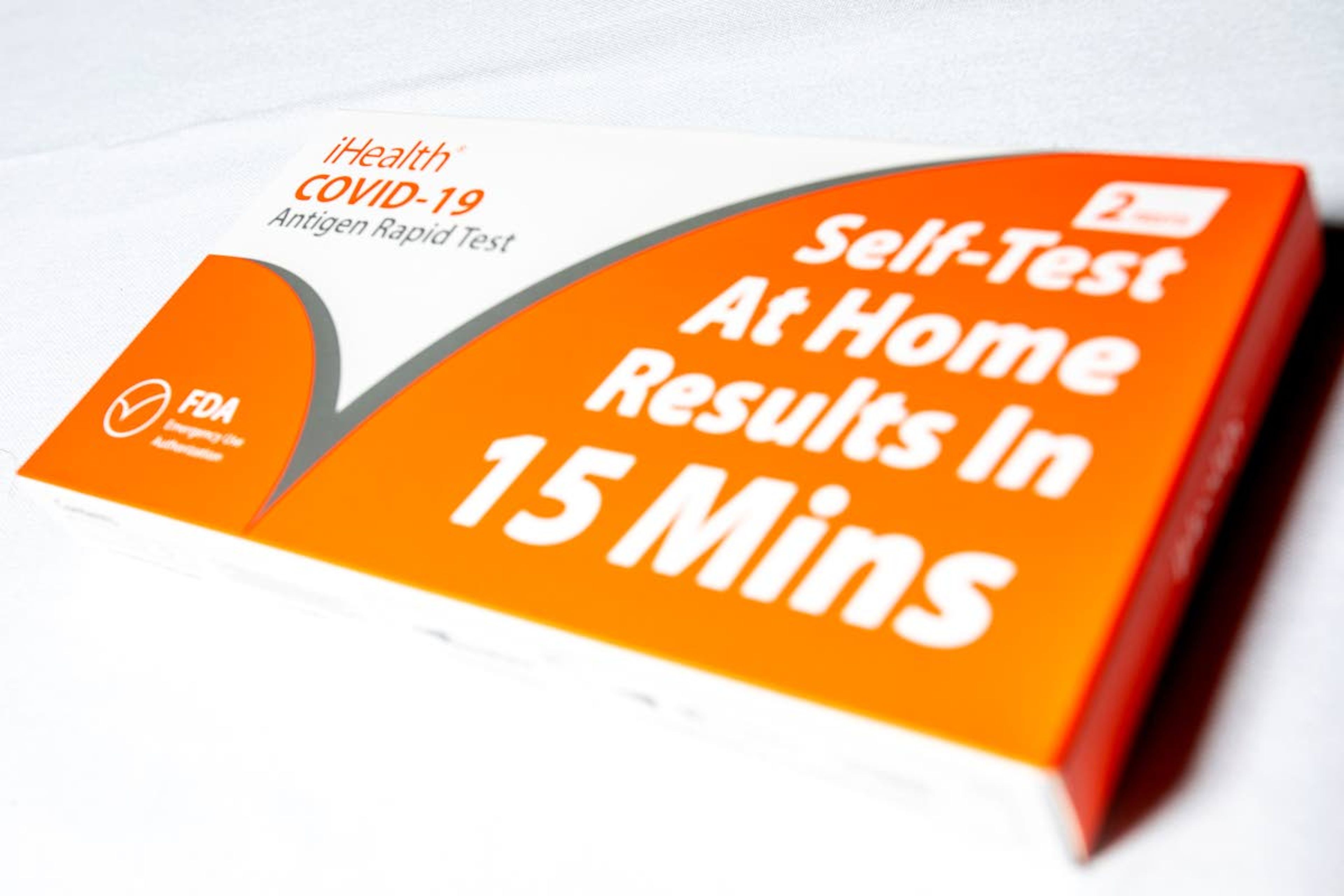Questions abound with increase in at-home testing
Those who test positive for COVID-19 don’t need a hospital test unless their work or school requires it; rise also affecting reporting of case numbers
As more people receive their at-home COVID-19 tests through the mail, questions have arisen about testing and quarantine protocols.
Most of those will stay the same regardless of whether tests are done at home or not, health officials said. However, some decisions may depend on individual circumstance and local regulations.
One common question from the public has been whether people should still get polymerase chain reaction tests if they’ve already tested at home, said Mike Larson, division administrator for Public Health – Idaho North Central District.
“That’s going to depend upon the person’s specific needs,” he said. “When I say that, what I’m referring to is if their business or school or something requires some type of an official doctor’s note or an official lab results.”
Chris Skidmore, director of Whitman County Public Health, said he recommends businesses not require a doctor’s note for positive tests, as it puts undue strain on physicians.
Most employers do not require notes, Skidmore said, but the health department has gotten calls requesting them from some people who don’t have a primary care physician.
“That’s something else a lot of employers should keep in mind, that not everybody out there has a primary care physician,” Skidmore said. “So getting a doctor’s note is not always something that’s easily available to them.”
Positive at-home tests are highly reliable, Larson said, meaning if a test shows someone is positive, there’s no reason to doubt the result.
However, at-home tests can be somewhat less sensitive, particularly to new variants, than PCR tests. That means if a person is symptomatic but tests negative at home, that does not guarantee they will continue to test negative.
“If your at-home test is negative, but you’re significantly ill, I would definitely recommend contact with your primary care provider to possibly work that through them, get their opinion, and possibly pursue getting what will most likely be a PCR, because they will be a little bit more sensitive to low viral counts,” he said.
Skidmore said a person may also want to get a PCR test if their at-home tests provide inconsistent or otherwise confusing results.
If someone tests positive, Skidmore recommends a person notify close contacts and their employer.
Larson said it can also be good to notify a primary care doctor in case a person’s condition deteriorates rather than improves.
“The vast majority of cases that we’re seeing with omicron are going to be mild cases where people will be able to take care of themselves at home,” Larson said. “But there’s always the possibility that you’re going to get sicker instead of not. And in that situation, it would be nice for your primary care provider to at least have a heads-up of what’s going on so that they would recognize that you may need more rapid intervention if you are becoming more ill.”
Positive cases detected by at-home tests can’t be counted for official reporting purposes, so it isn’t necessary to notify local health departments about such positive tests.
At a media briefing Tuesday, Kathryn Turner, Idaho deputy epidemiologist, said although there have always been some unreported cases, the increase in at-home tests is helping to drive the state toward a model of tracking COVID-19 that focuses on communitywide spread instead of tracking individual cases.
“This is the kind of surveillance we do for other diseases such as influenza, we certainly do not count every case of influenza that pops up in Idaho every year,” Turner said. “We use various sources of data, and we combine those data together to present a picture of what influenza activity looks like in the state and in our communities. So we’re moving toward that sort of model.”
One of the ways they hope to do that is through wastewater monitoring, which was recently expanded through a grant working with state universities and colleges to measure approximately 30 sites across the state, said Christopher Ball, chief of the Idaho Bureau of Laboratories.
The first of that data was recently submitted for review from the University of Idaho to the Center for Disease Control and Prevention’s National Wastewater Surveillance System.
“In many instances, what we see is the number of the wastewater gene copy number will increase and precede that case count or case number increased by approximately four to six days,” Ball said. “So it may provide us with a little bit of a sneak peek of things that will be coming down the pike.”
If a person tests positive, whether from an at-home test or through a PCR test, quarantine guidelines are the same. Current CDC guidelines require people who test positive stay home for at least five days following a positive test result.
People can end quarantine after five days if they are fever-free for at least 24 hours without medication and symptoms are improving. People who are severely ill should quarantine for at least 10 days and consult with a doctor.
Those who end quarantine after five days should continue to wear a tight-fitting mask through the 10th day following a positive test result whenever they’re inside at home or in public, and should avoid being around people who are deemed high risk. They should also not travel until 10 days after a positive test.
Up-to-date quarantine guidelines can be found on CDC.gov.
Sun may be contacted at rsun@lmtribune.com or on Twitter at @Rachel_M_Sun. This report is made possible by the Lewis-Clark Valley Healthcare Foundation in partnership with Northwest Public Broadcasting, the Lewiston Tribune and the Moscow-Pullman Daily News.





